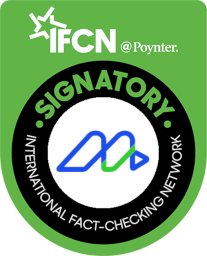How it works?
Akhbar Meter is the first digital media observatory in Egypt and the world, evaluating the content of media websites. In accordance with its credibility and commitment to professional and ethical standards since 2014, the Observatory is an initiative founded by a group of young Egyptians in response to the spread of unprofessional and unethical practices in the media landscape. The observatory seeks to identify unprofessional and unprofessional coverage, which in turn impacts the integrity and accuracy of the information provided to the public, ensuring it is free of misinformation, propaganda, and human rights violations.
The "Akhbarmeter" team monitors and evaluates the credibility and professionalism of the most prominent news stories covering issues of public interest within the content published by the ten most-read news websites in Egypt, according to SimilarWeb, a website specializing in website statistics, and based on the number of followers of these websites on social media. These websites are updated once a year, in January. The team evaluates content based on a scientific methodology developed based on local and international media codes of ethics, under the supervision of academics and practitioners in the field of media work. The team deduced a number of questions that determine the extent to which a news editor adheres to three criteria: "professionalism, credibility, and respect for human rights." The team answers these questions, explains any errors made by the content editors, and provides the public with links to primary sources so they can review the steps taken and verify and review the content. Each piece of content is scored according to each question, and based on this, the website automatically calculates the percentage of the digital newspaper's adherence to professional and ethical standards.
How is news selected from the monitored sites?
The team selects content based on its importance and relevance to readers' daily lives, or with the aim of pointing out professional errors that readers have become accustomed to reading without paying attention to due to their lack of expertise. The content also contains fallacies and errors that may amount to human rights violations or be taken out of context. Accordingly, Akhbarmeter followers find that the content varies across all genres of journalism, including politics, economics, local news, art, and culture, in an effort to address readers' interests.
The team selects one news item daily from each news site as a random sample, ensuring that the news and reports cover an equal number of the same sections (local, arts, politics, variety, sports, events and issues, and economy) on the monitored news sites throughout the month. Through this, the team aims to achieve a fair balance in selecting the number of news items from each section on each news site.
If the news item contains incorrect information, the site places a warning label highlighting the presence of some incorrect information in the news content so that Akhbarmeter readers are alerted. The site guarantees the right to respond to journalists whose content has been evaluated by the team, and these responses are published on the evaluation page itself.
The News Meter team provides a monthly analysis of each media site's performance, based on average news ratings, in addition to three in-depth reports representing the best, worst, and average-performing news content. The aim is to detail professional and ethical practices and identify sources of rising or falling news content.
How do methodology criteria affect the final evaluation score?
The relative weights of the evaluation criteria were arranged in ascending order, taking into account the difference in the impact of each criterion from the other. Accordingly, the relative weight of the professionalism criterion is one (1), followed by the credibility criterion, with a relative weight of two (2), while the third criterion, observing human rights, had the largest relative weight, which was three (3).
